How Long Does Almond Milk Last and How to Tell If It’s Bad
Found an opened almond milk carton lingering in your fridge and questioned its safety? Or hesitated before adding it to your morning coffee?
Learn all about how long almond milk lasts, when you need to refrigerate it, and how to tell if this non-dairy drink is bad.
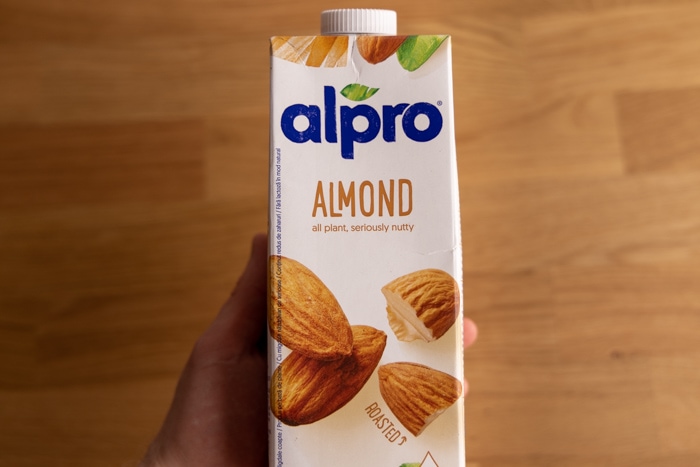
How Long Does Almond Milk Last?
| Pantry | Fridge | |
|---|---|---|
| Almond milk (shelf-stable, unopened) | Best by + 3+ months | |
| Almond milk (shelf-stable, opened) | 7 – 10 days | |
| Almond milk (refrigerated, unopened) | Use-by + 5 – 7 days | |
| Almond milk (refrigerated, opened) | 7 – 10 days | |
| Homemade almond milk | 3 – 4 days |
Once opened, almond milk lasts for 7 to 10 days if you seal it tightly and refrigerate it, no matter if it’s the shelf-stable variety or the one found in the refrigerated section. Homemade almond milk keeps for 3 to 4 days.
The difference in storage time between store-bought and homemade almond milk is because the former is pasteurized.
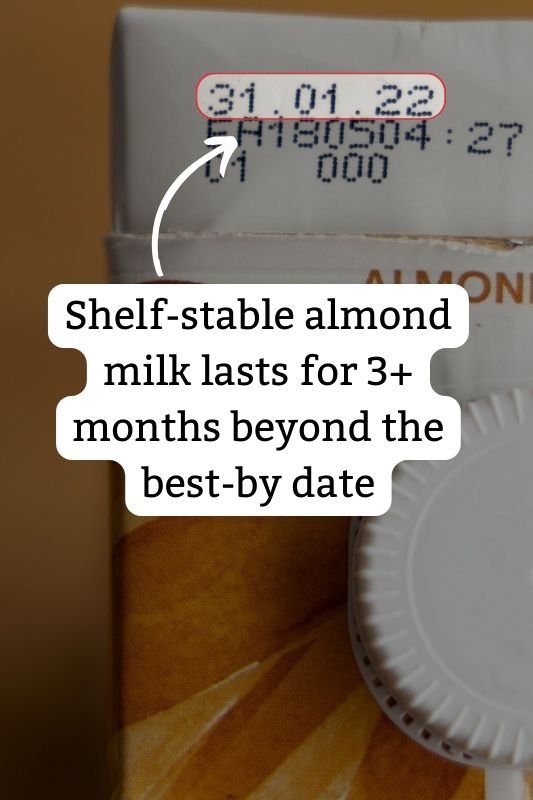
Differences Between Brands
As is the case with the shelf life of oat milk, there are some differences between brands.
Blue Diamond, for example, recommends different periods depending on the variety of the almond drink (7 for refrigerated, 10 for shelf-stable). Silk, on the other hand, goes with the same 7 to 10-day period, no matter the variety.
So to get the most accurate info on how long your almond will keep for after opening, read the label.
(For instance, my carton of Alpro almond milk says I should finish it within 5 days of opening.)
In the end, I strongly suggest discarding the milk if it’s more than 10 days after opening, no matter the brand. That 7-to-10-day period (which is also the typical storage time for opened milk) is already much longer than the standard recommended 4 days of storage for leftovers.
If you need more time, check out my article on freezing almond milk.
Expired Almond Milk
Shelf-stable almond milk lasts 12 to 24 months, and keeps for 3+ months beyond its best-by date. And as long as the carton is left untouched, it should be okay way longer than that. That means your expired carton of almond milk will likely be safe to use even if it’s 6+ months after the printed date.
(That best-by date isn’t an expiration date, but only a rough estimate of how long the dairy milk alternative should retain quality.)
Refrigerated has a much shorter storage time of only a couple of weeks, and it typically keeps for only about a week past the date on the label. So if yours is like 3 weeks expired, it’s best to toss it.
As long as the date on the label is acceptable, you can open the carton and check for any spoilage signs listed here.
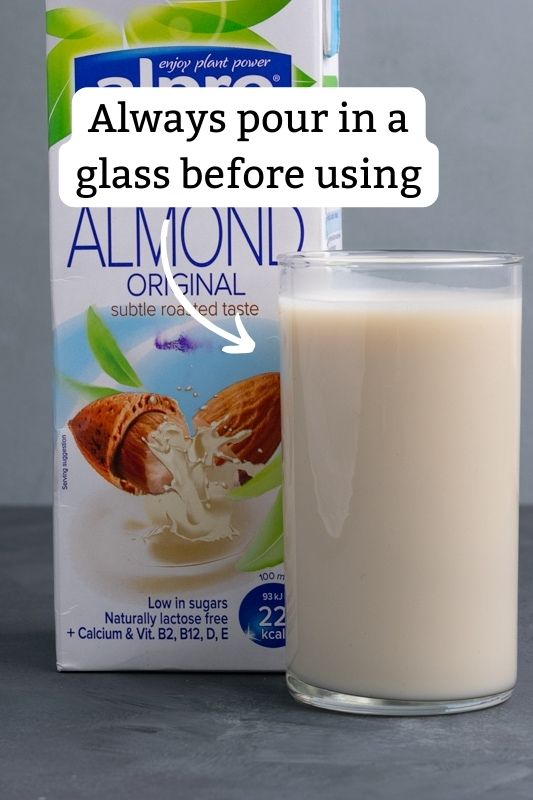
How Long Can Almond Milk Sit Out?
The USDA recommends you should throw away almond milk that’s been left out at room temperature for more than 2 hours. And if the temperature is above 90°F (or 32°C), you should do that after an hour.
Of course, those periods apply only to open almond milk and almond milk sold refrigerated. Shelf-stable cartons aren’t perishable and they can sit at room temperature just fine as long as they’re sealed.
It’s up to you how strict you are about this recommendation, but if you accidentally leave almond milk out overnight, discard it no matter what.
How to Tell if Almond Milk Is Bad?
Almond milk goes bad and typical spoilage signs include a bloated or leaky carton, mold and other discolorations on the surface, super lumpy texture (small lumps are fine), and an off smell or taste.
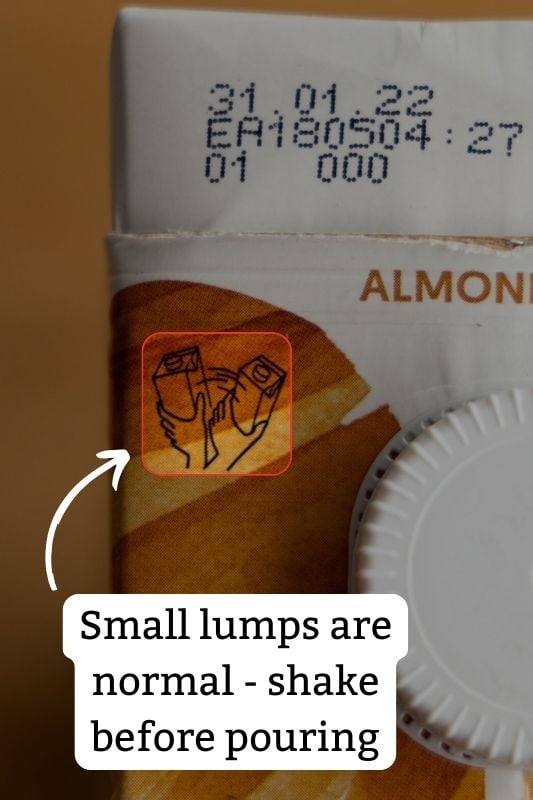
Here’s how to check if your almond milk is spoiled:
- Check the date. If it’s way beyond what’s reasonable (reread the shelf life section if needed) or opened for more than 2 weeks, toss it.
- Examine the carton. If the carton is bloated, puffed-up, or leaky, throw it out. The dairy-free milk isn’t necessarily spoiled, but there’s something seriously wrong here. And food poisoning is never fun.
- Check the milk’s appearance and texture. Give the milk a good shake, pour it into a glass, and look for any black spots, discolorations (that could be mold), and anything else that looks suspicious. Also, pay attention to the texture. Almond milk isn’t thick, and it’s not supposed to be thick unless you make it at home and leave the pulp in. Store-bought almond milk is mostly water, so its consistency is quite similar to that of milk.
- Give it a sniff. Almond milk smells nutty and fresh. If it’s sweetened, there will be a hint of sweetness, and if it’s flavored (e.g., vanilla), some of that will be there as well. So give it a good sniff to check what’s there. If it smells sour, old, or “funny,” your almond milk has gone bad.
- Take a sip. If everything is fine up to this point, take a small sip. If your almond milk tastes sour or off in any way, pour it down the drain. Otherwise, decide if it’s good enough to use based on the flavor.
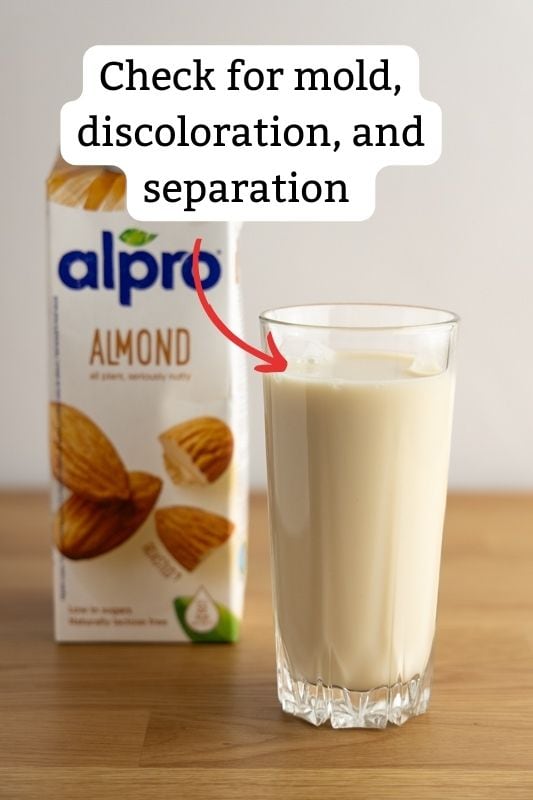
Do You Need To Refrigerate Almond Milk?
You should always refrigerate almond milk after opening. For unopened almond milk, the storage spot depends on its variety: shelf-stable almond milk can sit at room temperature, while the refrigerated option should sit in the fridge.
If you’re not sure if the nut milk you bought is shelf-stable or not, and the label isn’t clear about it, think about where it was in the grocery store or supermarket. If you got it from the refrigerated section, store it in the fridge.
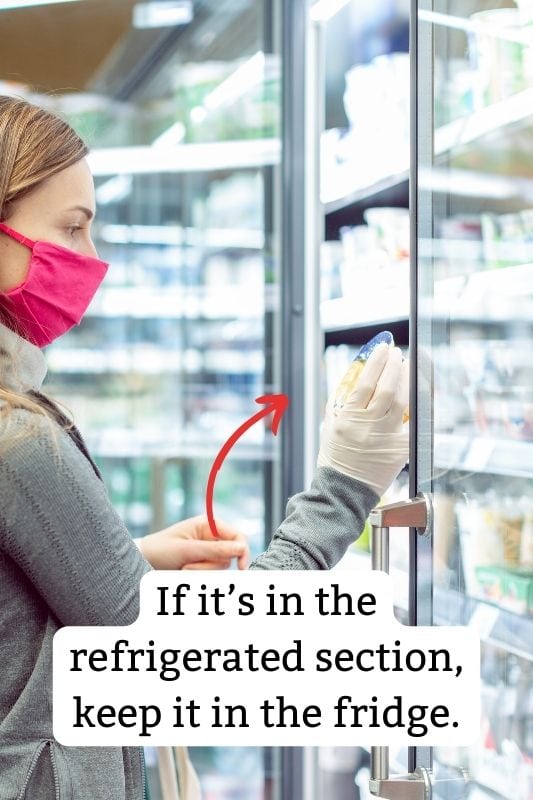
Differences Between Refrigerated and Shelf-Stable Almond Milk
There are two varieties of almond milk on the market: refrigerated and shelf-stable. The main difference between the two is the packaging.
Shelf-stable almond milk comes in aseptic containers (that are close to sterile) and is processed so that the liquid is safe from any microbes. Moreover, the cartons protect the drink from light and air, ensuring the taste and nutritional value last for months.
The (probably) most popular aseptic packaging technology is called Tetra Pak®. Drinks that are packaged using this technology include milk, all its alternatives (rice, soy, coconut milk), and many more.
The refrigerated bottles and cartons aren’t packaged in the same way and aren’t safe from external conditions. Because of that, you need to refrigerate them.
The ingredients list is the same for both, so it’s a matter of personal preferences.
If you drink almond milk regularly, feel free to grab the refrigerated one. Otherwise, buy the shelf-stable variety like the rest of us mere mortals.
How to Store Almond Milk
Here’s how you store opened almond milk
- Seal it tightly before refrigerating. If it’s not resealable, transfer the leftovers into a mason jar, an airtight container, or anything else that you can seal. Place it away from the fridge door for bonus points.
- Maintain food hygiene. Don’t drink directly from the carton or bottle, and don’t touch the spout. That will lower the chances of contaminating the liquid significantly.
Rotten Records: Share Your Snap!
Caught some food past its prime? Upload your photo to “Rotten Records” and help others spot the signs of spoilage. Every image makes our food community safer and more informed!
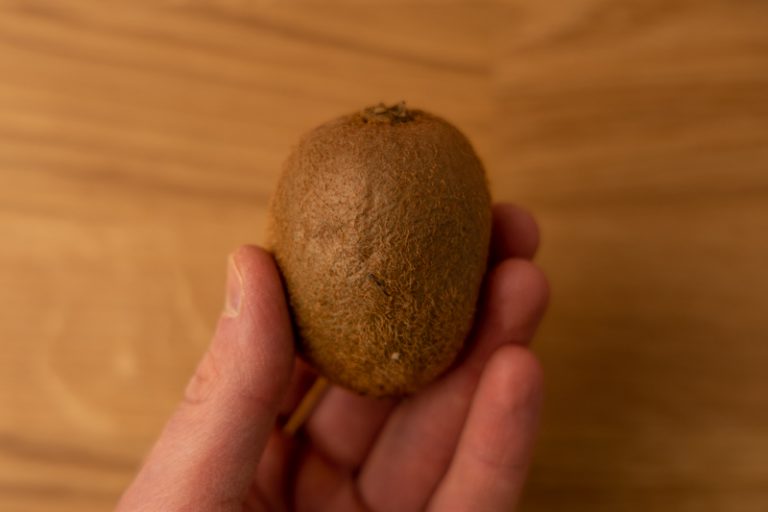
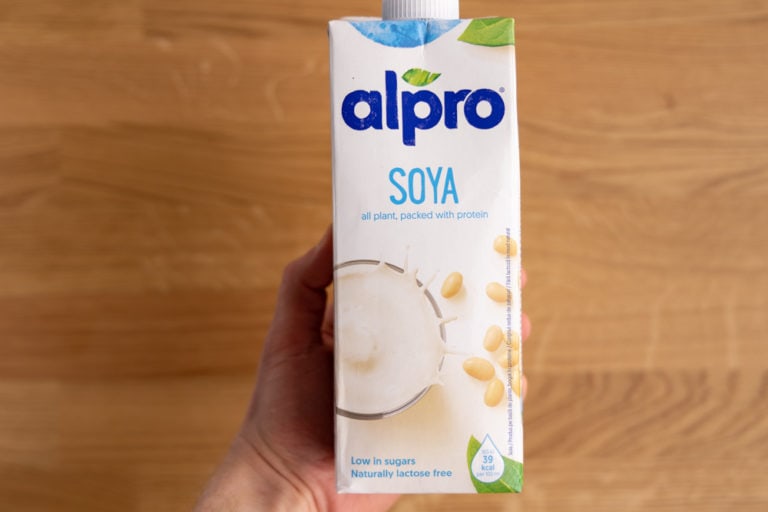
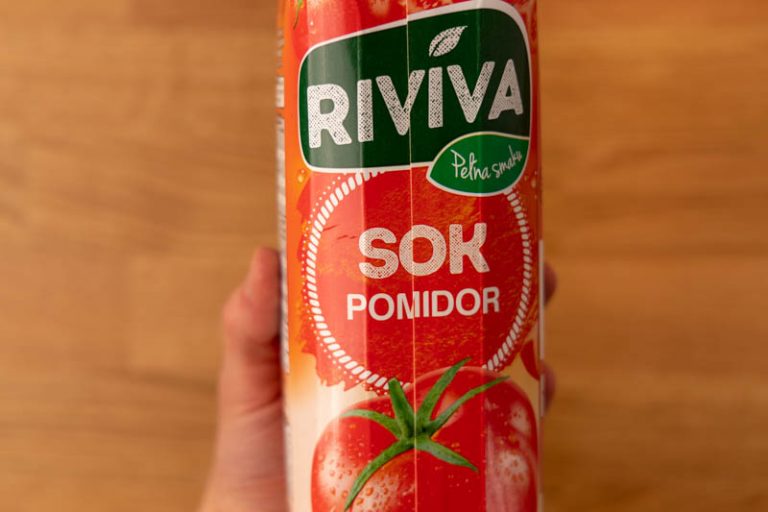
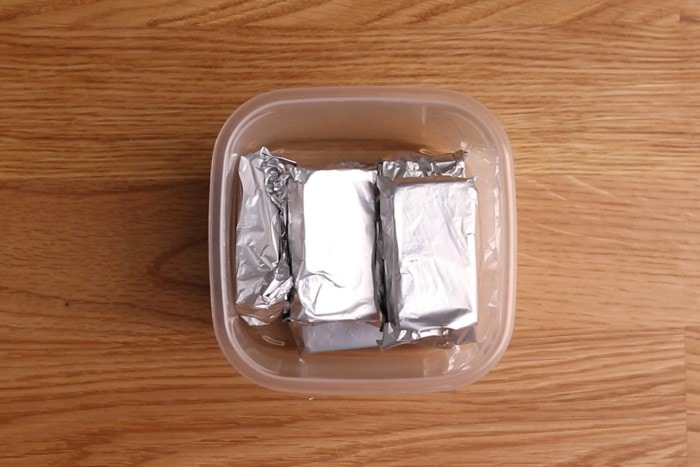
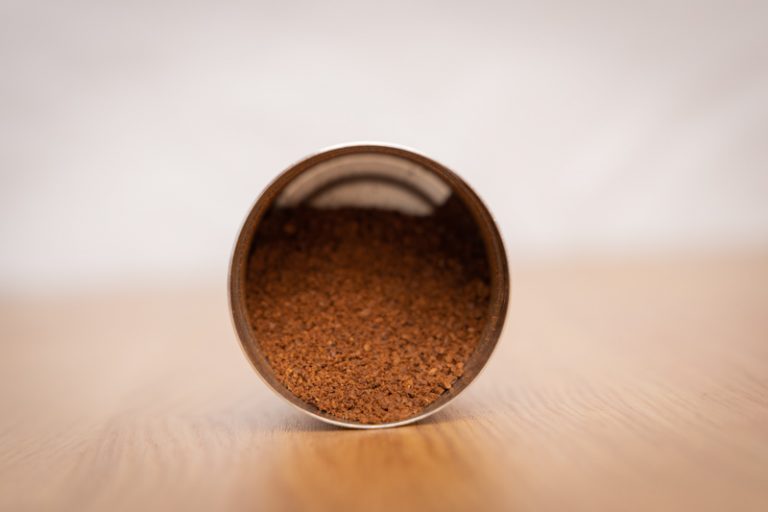
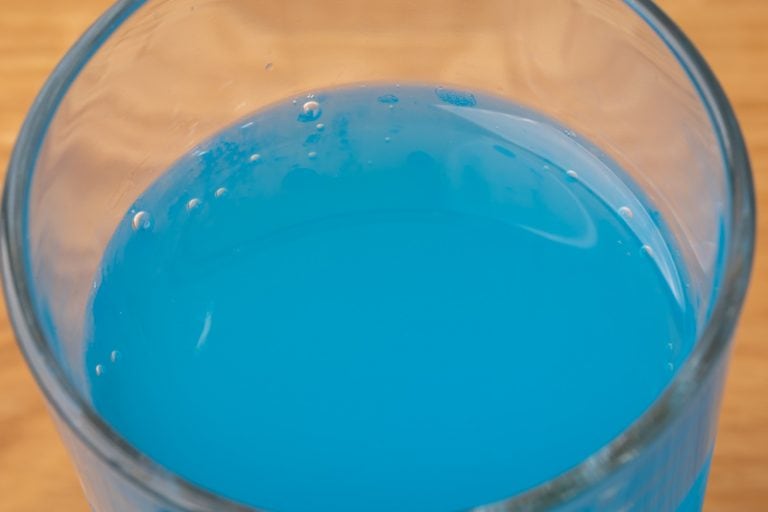
I drink Almond milk almost everyday. Especially in my morning smoothies. It will go bad after opening. Twice now, I have gone several days without my regular toast and smoothies breakfast, to come back to it and not checked the almond milk for freshness. Once it is opened be very, very careful! The first time it only lasted about four hours, but I had nothing left in my stomach when it was over. The second time was much, much worse. Started throwing up in just a couple of hours and continued that for over 2 hours.n it included clammy skin, severe cramping and nausea. Then it got worse! The clammy skin turned into dripping sweat, soaking my clothes and although the throwing up slowed, diarrhea started and was uncontrollable. I lost any strength I had by then and thank goodness my husband was home or I would still be on the bathroom floor. He was able to put some nausea medicine under my tongue and I was able to finally get under contol. Sorry to be so graphic but those who drink alternative milk need to pay attention after it is open! It does go bad and FOOD POISONING is real!
I have a tetra box of Natura Unsweetened Almond milk, kept in the pantry. Best before date is about 1.5 months ago. I tasted the milk, it was fine, but unflavourful. There were little white particles that appeared after I shook the contents. It did not smell spoiled.
I needed a bit extra for an overnight recipe for groats, but decided to err on the side of caution and avoid ‘food poisoning’.
Will keep the milk for usage myself, but not to share with my children.